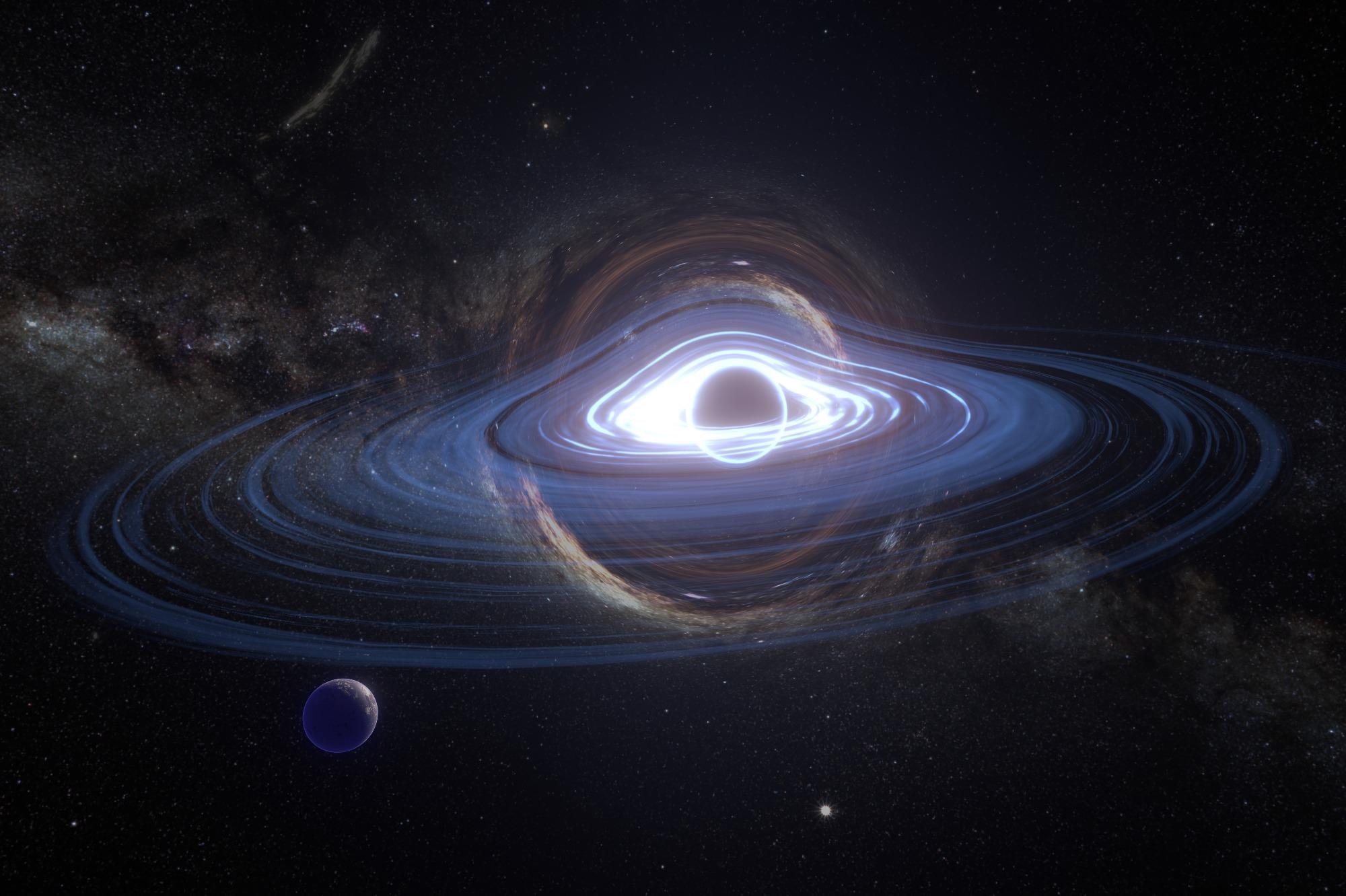Supermassive black holes present in the universe tend to swallow gas around them. The infalling gas is known as black hole accretion flow.

Image Credit: Shutterstock.com/ PatinyaS
A direct proof for the presence of an energetic hot wind launched from the hot accretion flow onto a weakly accreting supermassive black hole has been found by researchers from the Shanghai Astronomical Observatory (SHAO) of the Chinese Academy of Sciences. This denotes a step toward gaining insights into accretion processes around a black hole.
The study was performed by a research group guided by Professor Feng Yuan from SHAO, along with a group headed by Professor Zhiyuan Li from Nanjing University. The study was published in the journal Nature Astronomy.
Virtually every galaxy in the universe includes a supermassive black hole. The gas around the black hole gets accreted and leads to an accretion disk. The accretion disk emits powerful radiation, which becomes the origin of the radiation in the first-ever image of black holes obtained in 2019.
The black hole accretion flows are of two kinds based on their gas temperature — hot and cold ones. Theoretical work by the SHAO team in the past decade forecast that powerful wind should exist in hot accretion flows that essentially feed low-luminosity active galactic nuclei (LLAGN).
According to the latest cosmological simulation Illustris-TNG, such winds are known to play a vital role in the evolution of the galaxy. However, the direct observational proof for such a wind has been hard to achieve.
In this study, scientists discovered strong observational proof for an energetic outflow from M81*, a prototype LLAGN found in the nearby massive spiral galaxy Messier 81 by examining a high-quality X-ray spectrum.
The spectrum featuring unprecedented sensitivity and resolution was captured by the Chandra X-ray Observatory between 2005 and 2006 but was uninvestigated to date with respect to the wind aspect.
The outflow from M81* occurs as a pair of Fe XXVI Lyα emission lines that quasi-symmetrically blueshifted and redshifted at a bulk line-of-sight velocity of 2800 km/second, and a high Fe XXVI Lyα-to-Fe XXV Kα line ratio that denotes a temperature of 140 million-degrees of Kelvin of the line-emitting plasma.
The researchers interpreted the high-temperature and high-velocity plasma by performing magnetohydrodynamic simulations of the hot accretion flow onto M81*, generating a synthetic X-ray spectrum of the wind from the hot accretion flow as forecast by the numerical simulations.
The proposed emission lines were in accordance with the Chandra spectrum, thereby offering proof for the presence of hot wind. It was identified that the energetics of this wind is adequately strong to influence the close environment of M81*.
This research unraveled the missing connection between observations and the theory of hot accretion flows, besides the new cosmological simulations with AGN feedback.
Journal Reference:
Shi, F., et al. (2021) An energetic hot wind from the low-luminosity active galactic nucleus M81*. Nature Astronomy. doi.org/10.1038/s41550-021-01394-0.